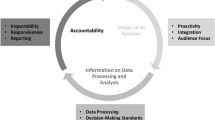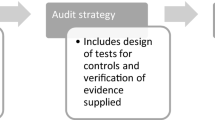Abstract
The concept of privacy by design is becoming increasingly popular among regulators of information and communications technologies. This paper aims at analysing and discussing the ethical implications of this concept for personal health monitoring. I assume a privacy theory of restricted access and limited control. On the basis of this theory, I suggest a version of the concept of privacy by design that constitutes a middle road between what I call broad privacy by design and narrow privacy by design. The key feature of this approach is that it attempts to balance automated privacy protection and autonomously chosen privacy protection in a way that is context-sensitive. In personal health monitoring, this approach implies that in some contexts like medication assistance and monitoring of specific health parameters one single automatic option is legitimate, while in some other contexts, for example monitoring in which relatives are receivers of health-relevant information rather than health care professionals, a multi-choice approach stressing autonomy is warranted.
Similar content being viewed by others
References
Cavoukian, A., Fisher, A., Killen, S., & Hoffman, D. (2010). Remote home health care technologies: How to ensure privacy? Build it in: Privacy by design. Identity in the Information Society, 3(2), 363–378.
Dix, A. (2010). Built-in privacy–no panacea, but a necessary condition for effective privacy protection. Identity in the Information Society, 3(2), 257–265.
Essén, A. (2008). The two facets of electronic care surveillance: An exploration of the views of older people who live with monitoring devices. Social Science and Medicine, 67(1), 128–136.
European Commission. (2012). Proposal for a regulation of the European Parliament and of the Council on the protection of individuals with regard to the processing of personal data and on the free movement of such data (General Data Protection Regulation). Brussels.
Finkelstein, S., Speedie, S., & Potthoff, S. (2006). Home telehealth improves clinical outcomes at lower cost for home healthcare. Telemedicine and e-Health, 12(2), 128–136.
Langheinrich, M. (2001). Privacy by design—principles of privacy-aware ubiquitous systems. http://cs.gmu.edu/~jpsousa/classes/699/papers/privacy%20Langheinrich.pdf. Accessed May 30, 2013.
Moor, J. H. (1997). Towards a theory of privacy in the information age. ACM SIGCAS Computers and Society, 27, 27–32.
Nissenbaum, H. (2004). Privacy as contextual integrity. Washington Law Review, 79(1), 119–158.
Noel, H. C., Vogel, D. C., Erdos, J. J., Cornwall, D., & Levin, F. (2004). Home telehealth reduces healthcare costs. Telemedicine Journal and e-Health, 10(2), 170–183.
Nordgren, A. (2012). Remote monitoring or close encounters? Ethical considerations in priority setting regarding telecare. Health Care Analysis. (advance publication online). doi:10.1007/s10728-012-0218-z.
OECD. (1980). Guidelines on the protection of privacy and transborder flows of personal data. http://www.oecd.org/internet/ieconomy/oecdguidelinesontheprotectionofprivacyandtransborderflowsofpersonaldata.htm. Accessed May 30, 2013.
Pagallo, U. (2011). Designing data protection safeguards ethically. Information, 2, 247–265.
Pagallo, U. (2012). On the principle of privacy by design and its limits: Technology, ethics and the rule of law. In S. Gutwirth, R. Leenes, P. De Hert, & Y. Poullet (Eds.), European data protection: In good health? (pp. 331–346). Heidelberg: Springer.
Rachels, J. (1975). Why privacy is important. Philosophy & Public Affairs, 4, 323–333.
Rössler, B. (2005). The value of privacy. Cambridge: Polity Press.
Schaar, P. (2010). Privacy by design. Identity in the Information Society, 3(2), 267–274.
Solove, D. J. (2002). Conceptualizing privacy. California Law Review, 90, 1087–1155.
Tavani, H. T. (2007). Philosophical theories of privacy: Implications for an adequate online privacy policy. Metaphilosophy, 38(1), 1–22.
Volkman, R. (2003). Privacy as life, liberty, property. Ethics and Information Technology, 5, 199–210.
Yeung, K. (2007). Towards an understanding of regulation by design. In R. Brownsword & K. Yeung (Eds.), Regulating technologies: Legal futures, regulatory frames and technological fixes (pp. 79–108). London: Hart Publishing.
Acknowledgments
Research for this paper was funded by the European Commission (the project “Personalized Health Monitoring – Ethics” (PHM-Ethics); contract number 230602) and New Tools for Health (VINNOVA, Sweden).
Author information
Authors and Affiliations
Corresponding author
Rights and permissions
About this article
Cite this article
Nordgren, A. Privacy by Design in Personal Health Monitoring. Health Care Anal 23, 148–164 (2015). https://doi.org/10.1007/s10728-013-0262-3
Published:
Issue Date:
DOI: https://doi.org/10.1007/s10728-013-0262-3




